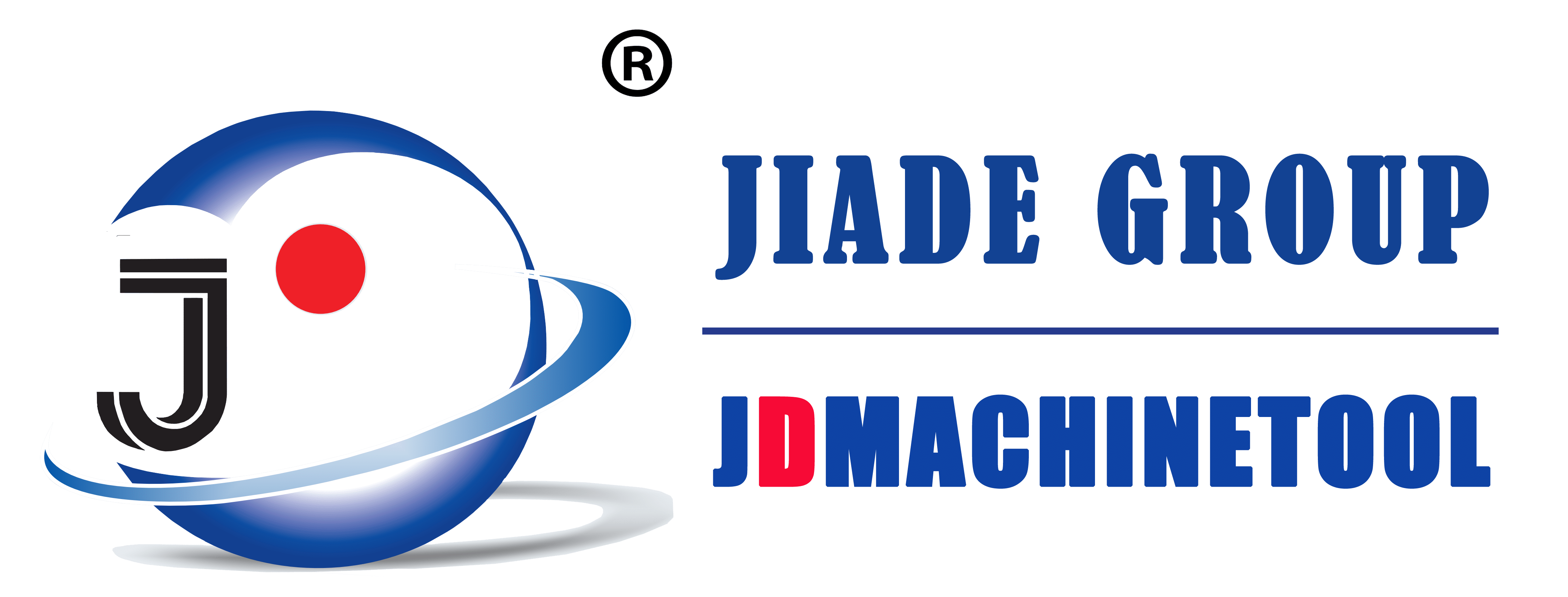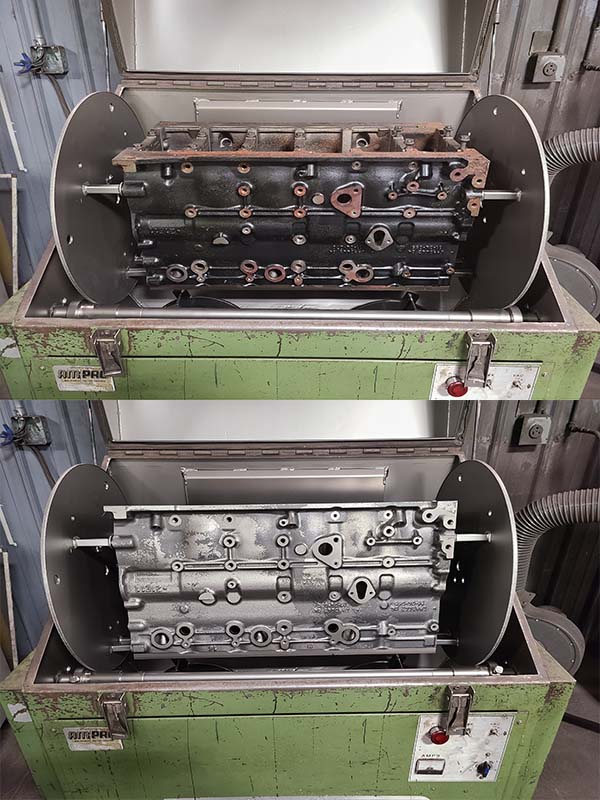LEANING ENGINE FROM OUR PRODUCTS
Keeping components and parts in your shop clean is of utmost importance, second only to washing your hands.
No matter the type of engines your shop might work on, one thing remains the same across the board – you need to thoroughly clean your components before assembly and before customers are sent finished projects. If you’ve kept up with our coverage of cleaning solutions over the years, you’ve likely realized that not one piece of cleaning equipment is capable of doing it all. From blast cabinets and different blast media to ultrasonics and aqueous cleaners to bake ovens, and more, each piece of equipment does the job differently and delivers a different outcome.
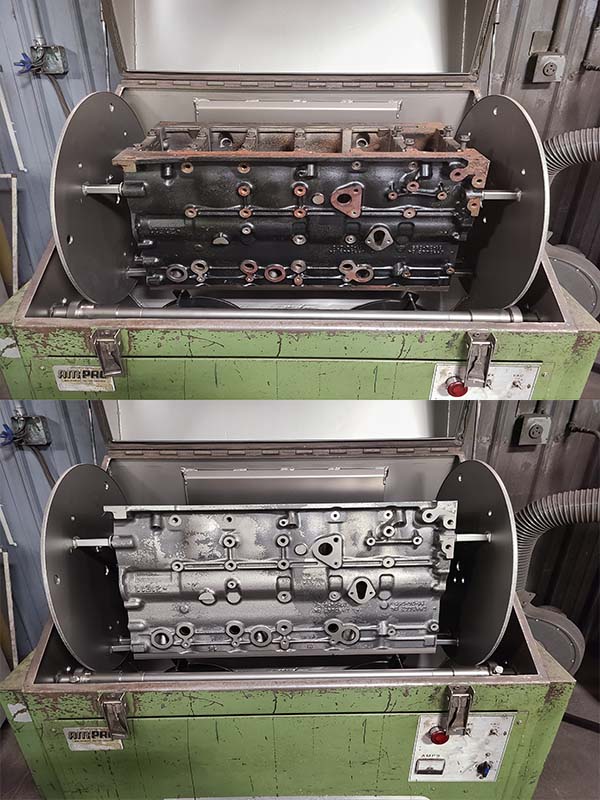
At D&J, there are four or five different cleaning methods used for cores, castings and small engine components. Not one single solution can do it all for the shop. Each is a critical part of the process.
“Cores will come in rusty and full of oil, grease, silicone sealant, and all that stuff when it comes in, as well as paint, so we have to remove all of that stuff,” D&J owner Drew Pumphrey says. “We get them back to where they look like a bare, brand-new casting before we start doing machine work on them. Some rebuilders don’t do that, but we do. When we’re done it looks like a brand-new casting. I need a few different pieces of cleaning equipment for different applications.”
“One of my newest pieces of cleaning equipment is a bake oven, which I don’t have up and running yet, but it’ll help burn out all the oils and carbon and everything like that out of raw castings and cores,” Pumphrey says. “After it gets done with the baking process, it goes to a shot blast. Right now, because the oven isn’t set up yet, we’re using an aqueous, water-based parts washer to get rid of the grease and oil and get the castings dry. That’s the equipment we use when engines first come through the door. Then, they go into a shot blast machine. The blocks and heads rotate in the machine and it shoots steel shot at the castings to get all the paint, rust and other material off. The oven is supposed to improve that process dramatically, which we should have up and running this month.”
“That parts washer was custom built by Renegade Parts Washers in Wisconsin,” he says. “They build solutions for regular engine shops and machine shops doing automotive work, but also solutions for OEMs like Cummins or GM that want a one-size-fits-all solution. They’ll build custom set ups where they have to meet certain cleanliness specs and timelines.”
The Renegade machine is water-based cleaning and also uses heat. According to Drew, the Renegade parts washer for final cleaning before assembly saves the shop the most time.
In addition to those cleaning solutions, D&J also has an Ultrasonic for small parts. Drew says it works well, but you’ve got to keep it maintained.
“The downfall of it is once the water gets some debris in it, it doesn’t filter well,” he admits. “We use it for valvetrain components, connecting rods, and some of the smaller engine parts – pushrods, rocker assemblies, things like that go in there.”
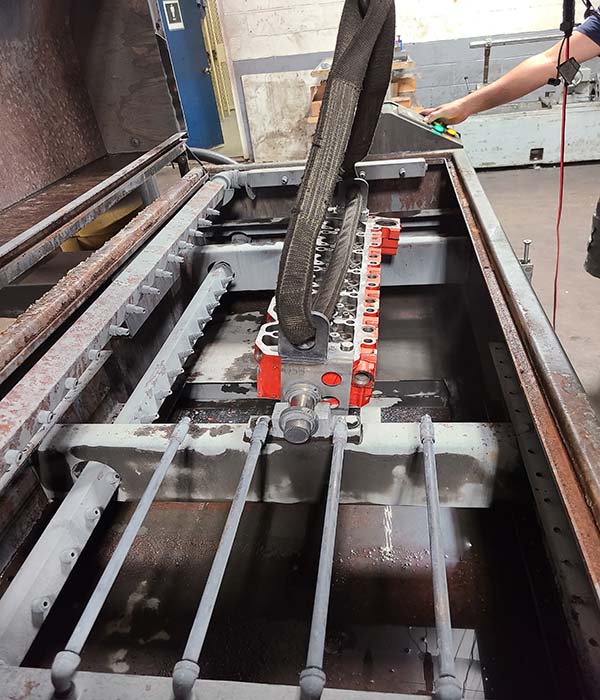
D&J will also utilize blast cabinets – steel shot media for cast iron engine components and glass bead for aluminum components such as housings. Finally, the shop’s steam pressure washer is used for only very tough-to-clean components, but it has more or less been replaced by the Renegade parts washer.
Off course, not only do shops need to consider how each piece of cleaning equipment functions and ultimately cleans, but you also have to factor in how long each of those processes will take when looking to purchase equipment for your own needs.
“Cleaning with the aqueous cleaner to degrease before we shot blast cores probably takes an hour,” Pumphrey says. “Then, cores go into the shot blast for probably 15 minutes. That’s a core that’s ready to be inspected for cracks and then machined.
“After the machine work is done and it’s ready for assembly, it goes into the Renegade rotisserie cleaner for 15-30 minutes to clean depending on how good the guys did in the first process. Sometimes that becomes a problem because of the aqueous parts washer in the beginning. That’s why we want that bake oven up and running. I think it will solve a lot of the issues from grease and carbon and everything from EGR systems that gets in the intake on the cylinder heads.
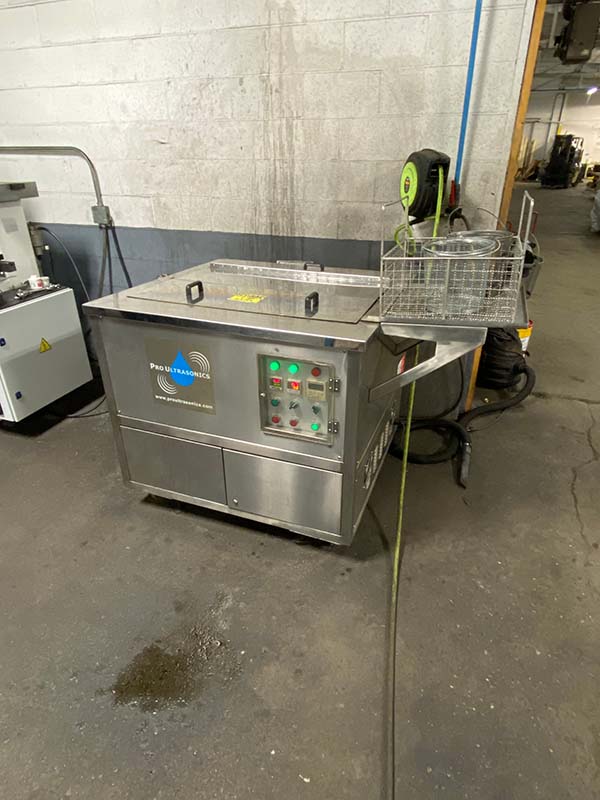
the construct of your shop’s flow and engine build process to help
make the cleaning itself easier, as well as the step before and after
the cleaning easier.
“With cast iron, the bake oven can go to 700 degrees F. They say a cycle time is five hours, but we can load it with more parts, so we’d be able to clean two to three blocks at a time and six cylinder heads at a time.
“The ultrasonic, depending on what you put in there, takes about 10 minutes typically. Parts come out of that pretty clean. The glass bead cabinet depends on what you’re cleaning, but 10-15 minutes is what it takes typically to clean a housing.
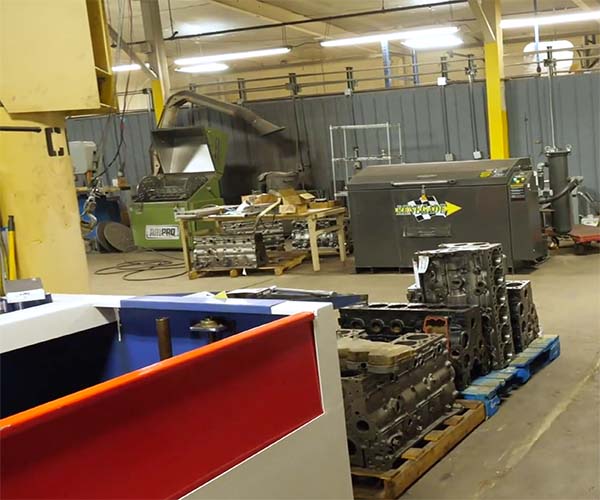
Lastly, in addition to timelines for each cleaning process, shops should consider where cleaning equipment gets set up in relation to different aspects of the engine building process. Try to avoid just sticking equipment where you have space. Be thoughtful about where the equipment makes sense within the construct of your shop’s flow and engine build process to help make the cleaning itself easier, as well as the step before and after the cleaning easier. Your employees will thank you.
Remember, every shop needs to clean its engine components, but what equipment you use is entirely up to you and your shop’s needs. There is no one size fits all.
In this article:cleaning, Shop Clean Up
